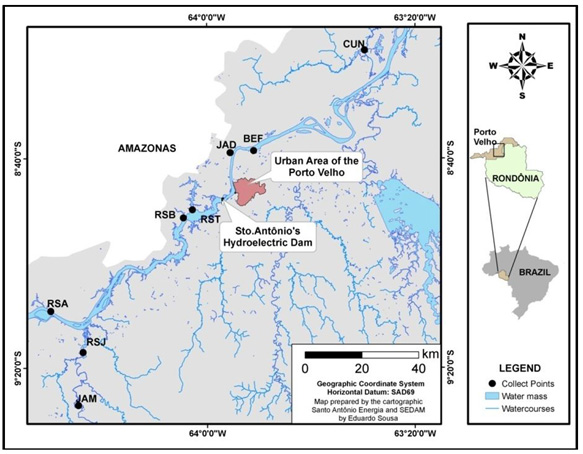Biomass reduction of Salvinia molesta exposed to copper sulfate pentahydrate (CuSO4.5H2O)
Keywords:
aquatic macrophytes, heavy metal, phytoremediation
Abstract
Copper in the aquatic ecosystem may remain adsorbed or be incorporated into the biomass and undergo biomagnification causing unwanted effects to aquatic macrophyte communities. This study evaluated the biomass reduction of Salvinia molesta (Mitchell) exposed to copper sulphate pentahydrate (CuSO4.5H2O) under laboratory conditions. Approximately 20.5 g of fresh mass (FM) of S. molesta (0.74 g dry matter, DM) were placed in glass tanks with different concentrations (n = 3) of CuSO4.5H2O as follows: 0.0; 2.0; 4.0; 6.0; and 8.0 mg L-1 for 28 days. The dry mass was determined after each seven-day interval over 28 days and submitted to repeated ANOVA measures, followed by a Tukey test (P<0,05). The results show that macrophyte increased until the seventh day of exposure in all treatments. After this period, the biomass of S. molesta decreased; but there was no significant difference between treatments with copper, except for the 8.0 mg L-1 treatment. The copper treatments decreased the S. molesta biomass an average of 43.2% (0.50 g DM) after 28 days. At the end of the experiment, copper absorption in the treatments with 6.0 and 8.0 mg L-1 was on average 77.9% higher than in the treatments with 2 and 4 mg L-1. The treatments with 6.0 and 8.0 mg L-1 reached their maximum bioaccumulation capacity after 14 days. The results show that contamination of the aquatic environment at concentrations above 2 mg L-1 Cu2+ can reduce the S. molesta biomass by approximately 43%.
Published
23/06/2015
Issue
Section
Papers
Authors maintain the copyrights for their work. However, they grant rights of first publication to Ambiente e Agua - An Interdisciplinary Journal of Applied Science. In compensation, the journal can transfer the copyrights, allowing non-commercial use of the article including the right of sending the article to other data bases or publication media. The journal uses the CC BY 4.0 license"






